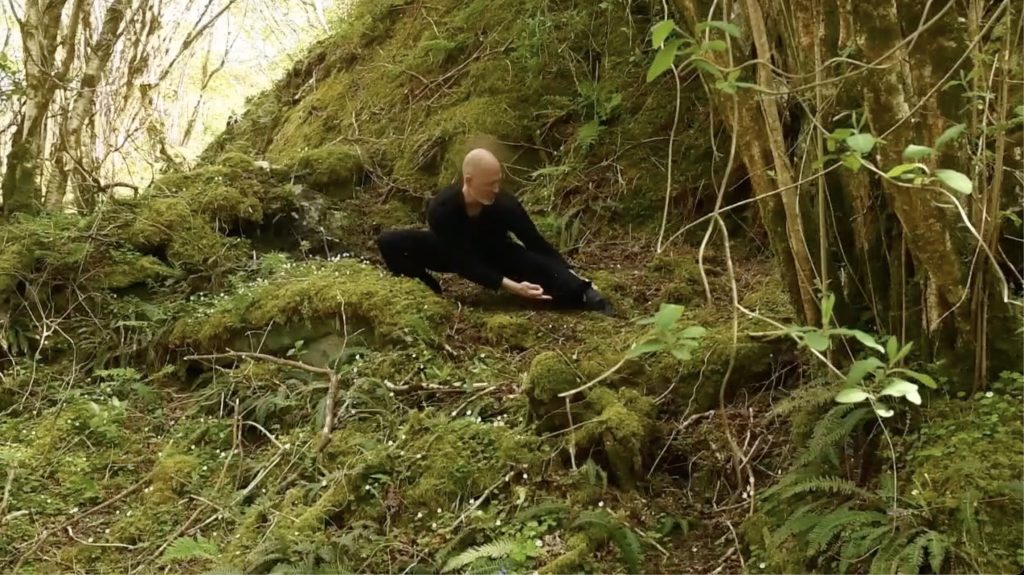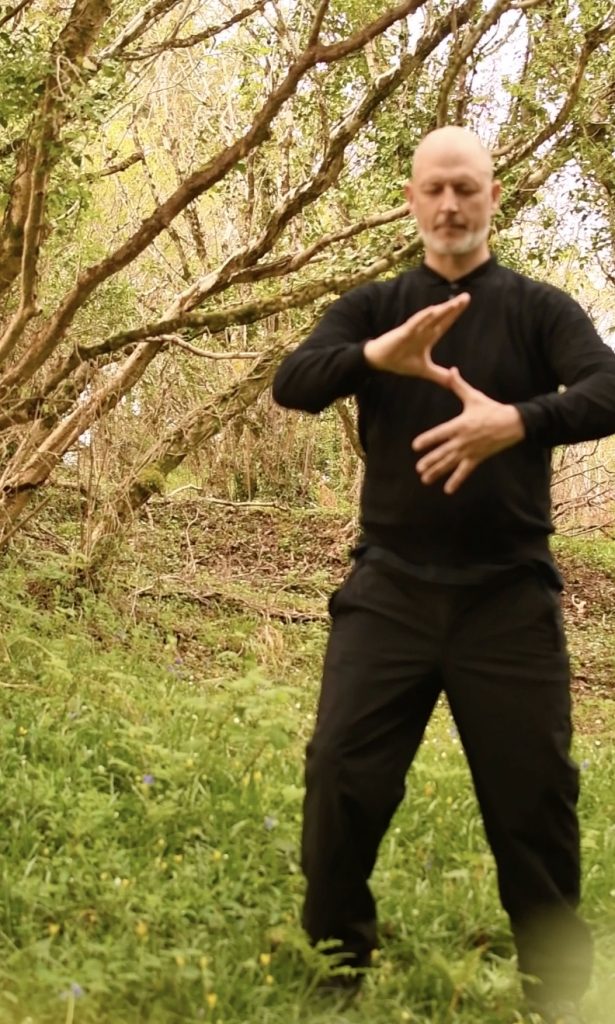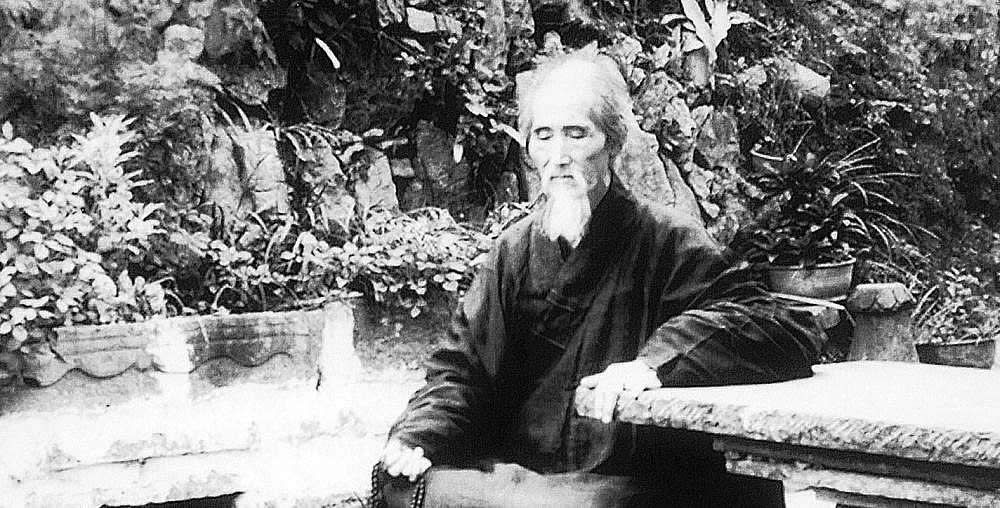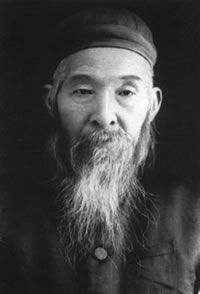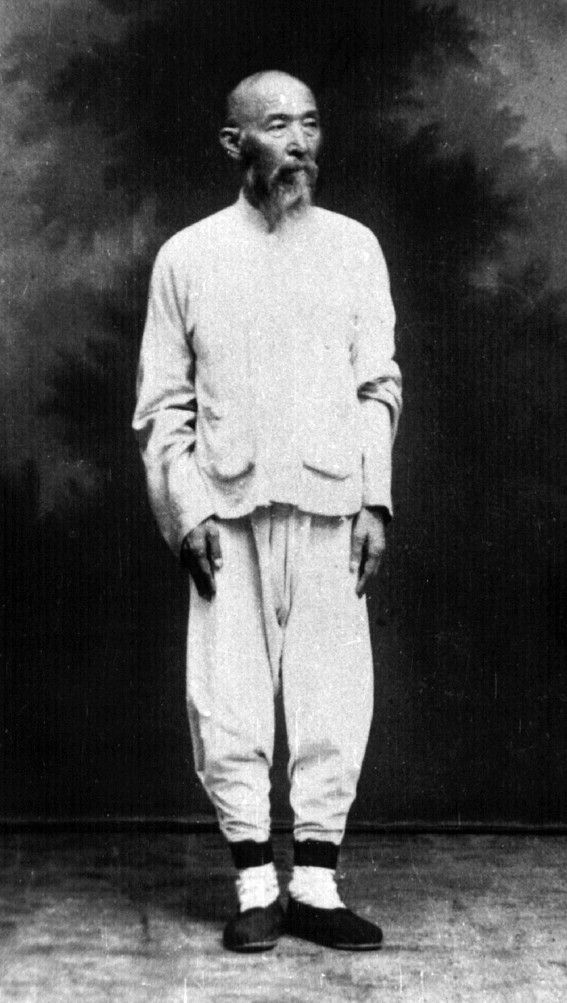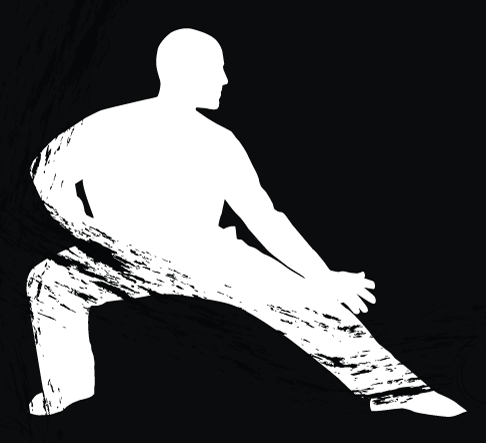
I’ve been trying to figure out the body mechanics of our Chen Pan Ling Tai Chi for the last while. The Chen Pan Ling Tai Chi Textbook, describes these mechanics in detail, which it terms dynamics. I’ve failed to figure these out fully, but I’ve made a small bit of progress. The method below is how I started to get more ground path power into the forms using methods I believe are specific to CPL Tai Chi. If anyone has any corrections or suggestions I’d be grateful.
The unique CPL preparation form pictured above gives us the clues needed to figure out the basic method of body mechanics or dynamics for the rest of the form. Chen Pan Ling wouldn’t have put a random sequence of movement at the beginning of his life’s masterwork for show, or even just as a signature, so it must be important. Realizing this, I drilled it backward and forward in different ways for the last couple months and found that it provides some keys to unlocking CPL power dynamics.
To summarize, the simplified movement in the preparation sequence isolates the basic method of CPL power generation, which would be very difficult to figure out from a full tai chi form movement. Combined with the first circle of the hands the preparation form breaks down the building blocks of power generation in a digestible progression.
The above diagram from the book shows the preparation sequence, it is illustrated and explained in more detail than other forms in the book. Note the initial stance is a “penguin” stance, I don’t know what the actual name is, but the toes are pointed outward like a penguin. This means the inguinal creases in the hips are both open, among other things. Afterward you step forward into what is called the “natural stance” where the knees are drawn together. This stance is similar to dragon riding stance in southern styles, which sometimes point the toes inward. In tai chi the knees are more drawn together with intent than an extreme forced posture as in these southern styles. Anyway this natural stance posture indicates that both inguinal creases of the Kua are now closed. So essentially the preparation form is opening and closing the Kua on both sides, like hinges, while incorporating a simple step.
So the opening and closing of two sides of the kua like this is using what Dillon Beyer calls hinges. Different styles of tai chi emphasize different hinges, in combination, to generate power. So right off the bat, our CPL form is specifically emphasizing these two particular hinges (inguinal creases.) Why is this?
Well why do you think Ed and Laoshi’s tai chi has so much rotational movement unique in it’s circles compared to other styles? At Ed’s paris seminar I got to the training hall early and Luo was there, we were locked out and started chatting. I asked him specifically why his tai chi had so much twisting and rotation. He explained this to me. The rotation in the CPL style gives you way more options when you’re fighting. Remember that Hung Yi was taught by CPL differently than his normal students, because of his skill level he got the full fat version. Luo then demonstrated single whip with an absolutly insane amount of power, it wasn’t like the whippy/shaky fa jin you see in chen style, so the point was this rotation can also lead to linear strikes of incredible power.
At Ed’s last Brittany seminar Laoshi told me that after master Hung had learned the tai chi from CPL he kept nagging Luo that he had learn this really important tai chi form that he had just lerned this really important master. Luo repeatedly told him that he did not want to learn tai chi at that stage of his life because it was too slow. So I asked, well what made you start learning it then? “When he hit me with it” was the answer. lols. IMO our CPL tai chi is one of the only remaining styles suitable for fighting, there are a couple others, but 99% of tai chi today is nerfed. The caveat to using it like this is that it is what Luo calls an operating system or software style, that is you have to develop the fundamentals in a hardware style first. Anyway Ed is the only one in Europe who learned this tai chi from Luo properly, I digress.
Anyway if you need an illustration of what I’m referring to by opening and closing the sides of the kua go into a forward gong bu stance. Try and hold a book in the crease between your groin and inner thigh. That forward kua is now a closed hinge. Then go into rear weighted gong bu as in roll back and try and hold the book on that side, the rear hinge is now closed, note that you may need to lift the toe on the front empty foot to facilitate this on the rear weighted closing. In the opening and closing of the kua like this you can generate a strong rotational force. When you add this rotational force to other hinges it can both direct and amplify them. It’s difficult to coordinate the timing of opening and closing both sides of the kua smoothly and it takes a lot of practice.
Once I realized this opening and closing is important my form started looking a lot more like Ed’s. Even so I was still not getting consistent power with it during single push hands, so I was missing something…
Now after the preparation form the next form has you draw a circle with both hands by rotating your waist while holding sort of a Bao tai chi / shoulder width posture. In the book there is a point in the description of this form about the spine being like a straight pole that rotates on a central equilibrium. Now, if you draw this circle by rotating your spine like a straight pole from the normal shoulder width stance, you will find the rotation limited by your hips.
However if you release the hips you sill see that they open and close following the spinal rotation, you can then amplify the rotation by feeding the opening of one hinge into the closing of the other, you need to be in the natural stance for this, it doesn’t work well if the knees are not slightly uniting. That is one side will naturally open and the other will close. This is just as I noted in the preparation form, except now your spine is creating the opening and closing. I’m still unclear on how the movement is properly initiated, which is important. I have some thoughts on this I might put into another post.
If you think in terms of rotating your spine like a post with central equilibrium, in conjunction with opening and closing the inguinal creases the cpl form starts to make a lot more sense. Note the similarities in this approach to bagua mechanics but from a totally different stance. A couple other styles emphasize this method as well but once you understand the synthesis here it becomes obvious that CPL was a genius.
I recommend combining the preparation form with the below video of Ed into a drill. Note that this is tai chi for power generation, it’s different than the public health style type tai chi. It requires that you understand the basics of using the ground as leverage and that you have developed your legs from the feet up to that end. If you’re trying oppening and closing hip rotations while stacking weight onto your knees its not going to be good for them at all. There is more to all of this, but this is a good starting point. I will post more findings if anyone is interested.
